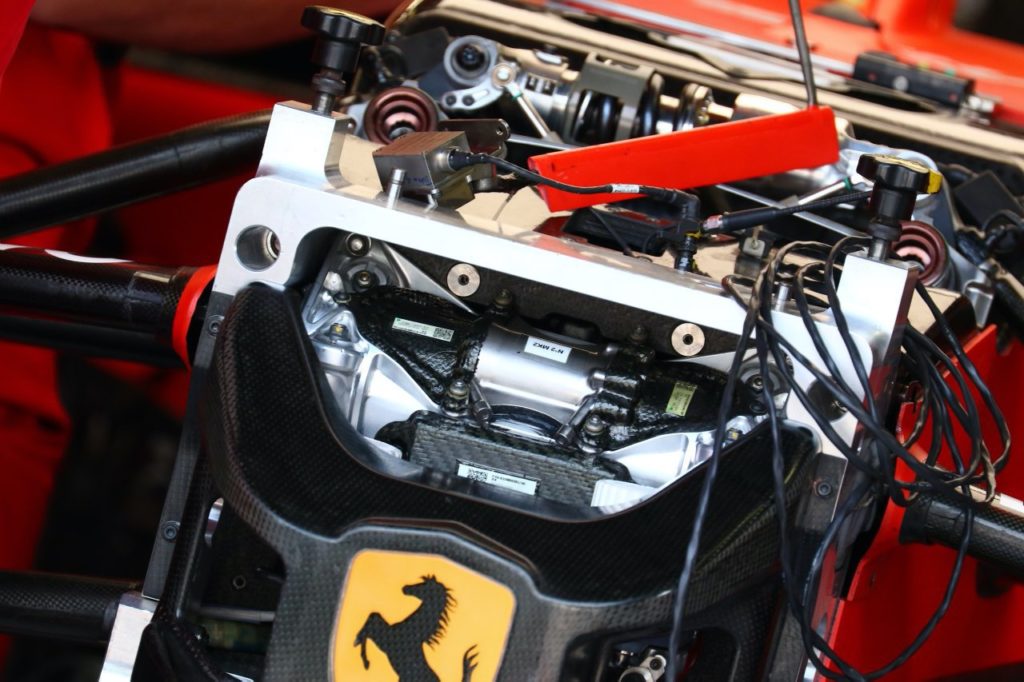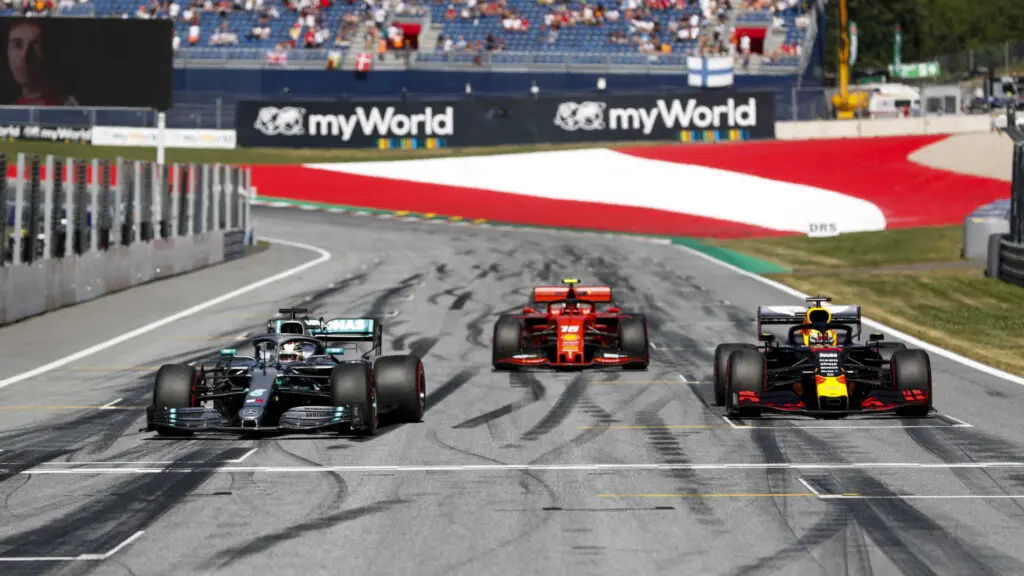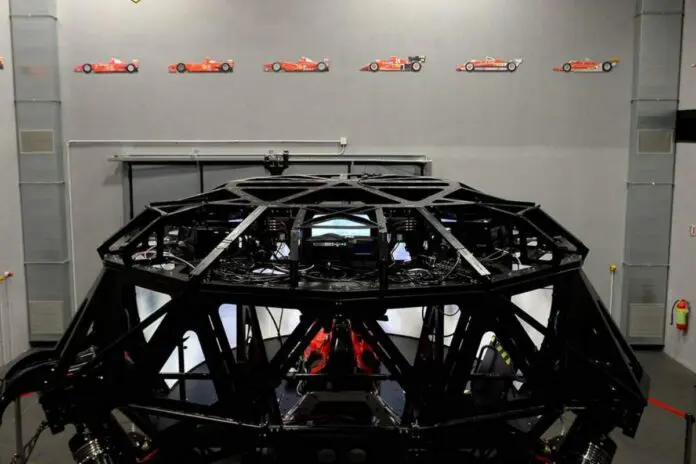F1 simulators: technical safety for the 2020 world championship
While for most Countries the light at the end of the SARS-CoV-2 pandemic tunnel is still quite far away, in the Head Quarters of F1 plans to start the world championship are already underway, with the ambitious goal of creating a calendar with as many races as possible. Fifteen at least, to avoid important problems related mainly to TV contracts. As of now, the first race that has not yet been postponed is the Grand Prix of France, scheduled for the last weekend of June (28/06). However, it is believed that the season can’t start before July. The most optimistic hypothesis to date is, in fact, that the Championship would begin in Austria, on the first weekend in July (05/07), four months after the last day of pre-season test, with a break that will then become longer than the classic winter break.
This uncertainty has generated a question, correctly and logically, among most of the F1 enthusiasts which has been submitted to me in the last few weeks:
“How will the teams prepare for the return in track? ».
Thanks to the very expensive simulators that each team has installed in their own factory. Ferrari will prepare with the “spider”, installed in 2010 as part of the “Gestione Sportiva” (GES) and developed in various steps up to a few seasons ago. Another identical one was built in Varano de’Melegari (Parma) in Dallara, which is still used today in the Haas team; while having very similar hardware specifications, at least initially, the software is very different, i.e. that part of physics that is developed internally by the various stables. A new simulator, much more advanced and located close to the logistics and the Fiorano track, is in the process of completion and will enter into operation in the second half of this 2020; slightly behind initial schedule that wanted it ready and running as early as this week.
This will be useful for the development especially of the Ferrari 2022, a car completely different from the last, seen the important planned regulatory change, unless important FIA afterthoughts in the coming weeks. The goal of the virtual tools, the simulators, is to get as close as possible the to the real world of the races. The teams, which are involved at the same time during the test days and free practice, in the weeks following the tests pre-seasonal Montmelò compare the data collected in track to verify their “project” correlation.
Once achieved a satisfactory result, they move on to increase the performance of the car by introducing aerodynamic innovations that were first conceived and developed at the Computational Fluid Dynamics (CFD) and then in the wind tunnel. The aerodynamic novelty at that time is only a container of fictitious numbers, which are inserted in the virtual model to be tested by both the tester drivers and the official drivers. The latter will then give their approval to try the novelty on the track. At the simulator you don’t try only aerodynamic novelties but you also make assessments of the car balance, trying different configurations and verifying the effects produced with respect to the base of departure. This will allow engineers and drivers to solve any aerodynamic problems more quickly on the track.

In addition to this, an important work on car mechanic set-up can be undertaken (height from ground, rake trim, suspension parameters, etc.). The data of the tracks, inserted in modern simulators, are collected by means of laser mappings that make it possible to simulate perfectly all the features, such as graininess or the bumps on the asphalt. As well as simulate all procedures, including departures. What is not possible to do is simulate a race: drivers are alone in the track because the high complexity of the physical model does not still allows for an adequate level of artificial intelligence.
Moving on to the limits of these simulators, the most important is on thermal degradation of tyres. Pirelli supplies to teams an encrypted virtual model that, similar to a black box, can be verified only in its external behavior or in its output reactions (output) at a given stress input, but whose internal operation is unknown. This model, which works in harmony with the main and well more important developed by the teams, is linked to the simulators to reproduce all the main related variables to the tyres, first and foremost grip and temperature. At this point feedback is bi-directional; the various stables send data and opinions necessary for Pirelli both to plan the choices of use in the various Grands Prix, as compounds and relative main parameters (pressures, camber, etc…), and both for evolve and improve the model thanks to the correlation track – simulator. A know-how that Pirelli has now transferred for several years on the development of road tyres. Thanks to the output data from the virtual model provided from the Italian company, the teams are able to simulate the thermal degradation of the tires.
And it is precisely in this as the difference between the stables tends to widen…in an important way; think that some use models very basic because the previous ones released very little data related, sending the car’s development off track. This means constantly simulating under similar to, or very close to, those of new rubber, so without knowing the behavior of the car especially in the second half of the race stints. In this respect the best simulator, according to the information gathered, would be at Mercedes, then Red Bull. Ferrari, unfortunately, still to be distant.

While the Ferrari spider is to be considered in all respects a dynamic simulator, it is believed instead that in the short term the simulators will become more and more static: they will go to mainly reproduce the reactions on the three axes of rotation i.e. pitch, roll and yaw. The engineers does not really care much about G, longitudinal and transverse: those are now well matched in comparison to the real on the track, not to mention that, even with the mega “spiders”, they still manage to simulate for a very few moments spikes maximum of 4G, forces not comparable to reality, at cost of huge energetic expenses. As for the medium and long term it is very likely that you will go towards the Head Mounted Display (HMD) technology, the one that is mostly known as VR viewer, as of now still quite immature although used in some areas.
All this to answer the initial question: the season 2020, SARS-CoV-2 permitting, can certainly start in “technical” security for the various teams, thanks to the great job behind the simulators. In this regard, in so many meetings held so far has never come from the teams to the FIA the request to plan a few days of testing in view of the seasonal start. Attention though: in doing so there is certainly to be emphasized as it could see even more gap on the track between those who have good simulators and those who are still having trouble finding the right correlation.
translation by: Veronica Vesco – @veronicafunoat
Extract from a PG Tech article published in the Corriere della Sera newspaper

